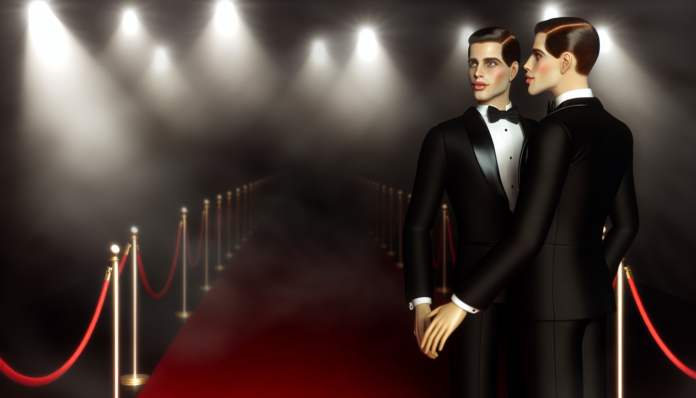Introduction
In the golden age of Hollywood, two matinee idols captured the hearts of millions: Cary Grant and Randolph Scott. Their friendship, rumored intimacy, and the societal implications of their relationship reverberated throughout the entertainment world. Set against the backdrop of the 1930s and 1940s, a time when rigid gender norms and sexual conservatism prevailed, the scandal surrounding their bond not only highlighted the muzzling nature of their era but also left an indelible mark on Hollywood history.
The Scandal
While they were frequently seen together, often living in the same home, the true nature of Grant and Scott’s relationship remained shrouded in ambiguity. Hollywood tabloids of the time fueled speculation, with some insinuating a romantic entanglement. The scandal reached a zenith when a series of intimate photographs and candid moments surfaced, leaving fans and critics alike in a frenzy of gossip and intrigue.
Reputedly, their living arrangement involved shared parties and outings, often leading to tantalizing headlines. In a 1940 interview, Grant stated:
“Randolph is the finest friend I’ve ever had.”
This echo of devotion left many to ponder whether it hinted at something deeper, as life in Hollywood became increasingly plastic and superficial.
Key Events and Reactions
- Living Together: For more than a decade, Grant and Scott shared a home, which raised eyebrows.
- Rumors and Tabloids: Publications like Photoplay and The Hollywood Reporter speculated about their relationship, often leaning into sensational storytelling.
- Political Climate: Amid World War II, shifting norms around masculinity were at play, adding fuel to the fire of public curiosity.
Sources from that time reveal the tension between their friendship and the media’s manipulative allure. While the public might not have accepted overt homosexuality, they were fascinated by the duo’s charisma and charm.
Moral and Cultural Analysis
Society’s Reaction
The prevailing attitudes towards sexuality during the 1940s were strictly conservative. Homosexuality was often hidden, shunned, or pathologized. Grant and Scott’s ambiguous partnership did not fit into the “ideal” narrative of masculinity, yet their undeniable bond was intriguing to many Hollywood insiders and fans.
- Preconceived Notions: Many assumed their relationship was platonic. Men exhibiting deep emotional connections were often dismissed or ridiculed.
- Change in Perception: While some in Hollywood speculated openly, public outcry was limited, showing the compartmentalized view of sexuality at the time.
Consequences for Involved
While neither Grant nor Scott faced direct professional repercussions, the intrigue surrounding their relationship undoubtably shaped their public personas. Both actors successfully contorted themselves into the cinematic ideals of the time, leaving much of the speculation in the realm of unspoken conversations.
Modern Day Perspectives
Had their love story unfolded in today’s world, the public response would likely be drastically different.
- Increased Acceptance: Societal norms have shifted towards greater acceptance of LGBTQ+ relationships.
- Representation: Today, such a relationship would be considered a powerful narrative of love and friendship, praised for its authenticity.
The impact of Cary Grant and Randolph Scott’s bond reminds us of the blurred lines between public personas and private lives, illustrating a complex history that resonates even in contemporary discourse on love, sexuality, and identity.

